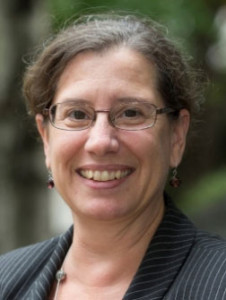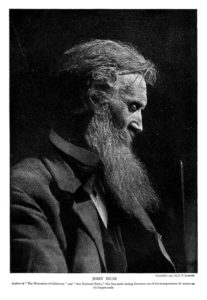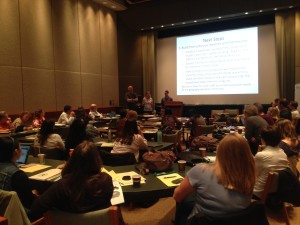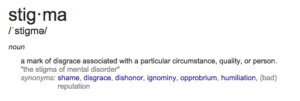By the early 1980s, the introduction of neoliberal policies across urban America profoundly impacted its already declining industrial base. In Chicago, from 1972 to 2000, manufacturing employment plunged by nearly 260,000 jobs (and thus decent blue-collar wages). Soon the industrial economy was replaced with a service economy that consisted of low-wage service jobs with no social protection, unionization, or opportunities for promotion. This economic transition, coupled with an increasing demand by middle-class families, provided the principal conditions for the expansion of the domestic work industry.
Since the early 2000s this industry has critically expanded in mayor metropolitan cities in the US, and Chicago is no exception. Today, an estimated 200,000 domestic workers constitute the invisible backbone of Chicago’s economy.
The Nature of Domestic Work
According to the International Labor Organization (ILO) Convention # 189, domestic work consists of work performed in or for a household or households,. It usually includes cleaning, shopping, cooking, caring for the sick or elderly, caring for children, and looking after pets among other tasks. Many domestic workers live in the home of the family for which they work. Those who do not live in the employer’s home often work for several employers, generally for only a few hours per week for each employer.
Unlike many work industries, domestic workers operate in a largely unregulated and unprotected arena. The army of housekeepers, caregivers, cleaners, and nurses, enable thousands of Chicagoans to go to their jobs every day. Yet, despite this needed and growing workforce, domestic workers suffer from few labor protections and demanding working conditions. According to the ILO 2011 Report, these workers typically earn around 40 percent of average wages in their country. They often have no limit to the hours they work, are rarely entitled to rest periods, are not paid the minimum wage and do not receive employee benefits such as maternity leave.
In the US, domestic workers are explicitly excluded from the protections of key federal labor and employment laws and standards. The 1935 National Labor Relations Act, which originated in racists regulations to prevent African-American workers in the southern states to join unions, guarantees workers’ rights to form unions, choose representatives, and bargain collectively. However, the law does not apply to either farmers or domestic workers. Nor does the federal anti-discrimination law which only applies to companies with multiple employees. Domestic workers are also excluded from the protections of the Occupational Safety and Health Act. Live-in domestic workers, who are especially subject to unreasonable and uncompensated demands on their time, are excluded from the overtime provisions of the Fair Labor Standards Act.
Yet, their contributions to families around the country are limitless. Domestic workers provide emotional, physical and social support for children, elders, and working family members. The labor provided by domestic workers is the labor that makes all other work possible. Households are looked after, children are raised and cared for and elders are comforted and assisted. Due to these responsibilities and tasks provided by domestic workers, families are able to go to work in peace and know that their most important assets are in good care and protection.
Why this job is unseen or remains unseen and unregulated is in many ways attributed to the capitalist logic: something that does not generate value or facilitates its exchange is devalued or rendered socially invisible. Additionally, it is difficult to quantify, measure, and assign a value to the tasks performed by the domestic workers in capitalist terms. Nevertheless, housecleaners and nannies typically take great pride in their work even when it goes unnoticed or unappreciated by their employers. Nannies develop a lot of affection with the children they take care of and, in some cases, play a stronger parental role than the children’s parents.
Contributing to the invisibility, many things get confused in this type of industry to the disadvantage of domestic workers and the benefit of the employer. Domestic work is not recognized as employment in the traditional sense; it is performed in someone’s home, not in a conventional workplace. In domestic work, the home and workplace is one and the same.
Related to the home-workplace conflation is the fact that domestic workers are not any type of worker. They maintain intimate relationships with their employers. Following Barbara Ehrenreich “what distinguishes domestic workers from other service workers, say, retail, hotel, or sales employees, is the intimacy of their relationship to their employers” (in Burham and Theodore, 2012:7). Most service-workers are unlikely to even know the names of anyone higher up in the corporate hierarchy than her/his immediate supervisor. In contrast, most domestic workers are employed directly by the families they serve. They work or live in their employers’ homes, and may even sleep in one of the children’s rooms.
Some employers view these workers as “members of the family”. But many other employers take advantage of this relationship, which has allowed certain abuses to occur and go unaddressed. Such abuses include workers not being paid overtime or being asked to perform extra duties without compensation. As such, many of the problems arise because domestic workers operate without written contracts.
Domestic Workers Organizations in Chicago
On May 22nd 2014, I invited Gaby Benitez, an ex-organizer and coordinator for the Latino Union of Chicago, to give a presentation in my undergraduate-seminar on Domestic Workers Economy at DePaul University. Latino Union is an organization that, among other initiatives, has created different programs to help domestic workers educate themselves about their rights, current policies, and their health and safety. Accompanying Gaby was a friend and domestic worker named Vicky. In the session, Gaby delivered a great presentation on history of the Latino Union, different aspects of domestic work, and the organization itself. She concluded her presentation summarizing some of the main findings of an empirical study on the domestic work industry conducted in 2012 by the Center for Urban Economic Development, at the University of Illinois at Chicago. The research team in charge of this study surveyed 2,086 workers in 14 US metropolitan areas. Among other findings, this study reported that 70% of domestic workers in the US earn less than $13 an hour, 28 percent of nannies are paid less than the minimum wage, the median hourly wage for live-in domestic workers is $6.15, and less than 2 percent of domestic workers receive retirement benefits. Gaby remarked that due to these conditions, domestic workers are not able to save money, are barely able to pay their bills, make payments that are regularly late, and have difficulty in buying food. Additionally, she stated that 23 percent of workers have been fired from jobs after complaining about working conditions and 29 percent of caregivers surveyed had suffered a back injury at the time the survey was conducted.
Gaby’s presentation was followed by Vicky’s testimony. Vicky who is in her mid-50’s, worked as a housekeeper and nanny for 30 years. In her last job as a housekeeper, she lived in deplorable conditions at her employers’ house. She was given a room in the basement which was infested with rats and had a putrid smell that would waft up from the sewers at a constant interval. These conditions were literally making her sick. After a few months living and working in that home, she was forced to quit her job because of the toll it was taking on her health.
In Chicago, “Latino Union” and “Arise” have joined the fight for domestic workers’ rights and better working conditions. Both organizations provide training on how to use green products in the work area, operate computers and other technology, and offer English classes. Besides this, they offer workshops that teach domestic workers how to build and paint and do certain tasks on the job. By doing this, the organizations guide and support domestic workers in acquiring better skills for themselves and become educated professionals in the workforce.
Domestic Workers Bill of Rights
Both Latino Union and Arise are also part of a larger movement that has started recently, more precisely in 2010 in New York. The battle was long and hard, but after six years of organizing together with unions, employers, and community organizations, the New York State Legislature passed the Domestic Workers Bill of Rights on July 1, 2010. This was a crucial step towards building a national movement in the struggle for labor rights, the protection of the workers, and an end to exploitation and abuse.
Under this bill, domestic workers in NY were finally recognized as part of the workforce. The bill includes the following protections requiring employers to: provide one day of rest per week, one meal and one rest break a day, pay no less than the minimum wage, pay for all hours worked, give paid time off, keep a contract, and provide a workplace environment free from sexual harassment, A similar bill in California was vetoed in 2012.
In 2013, was the turn of Hawaii, and very recently this year of Massachusetts to pass the Bill of Rights. Domestic workers in the Chicago area are ready to join this movement, to no longer stay hidden in the home. They need organized support, steady advocacy, and collaboration between many different groups, organizations, institutions, and individuals.
In sum, the labor provided by domestic workers is the labor that makes all other work possible. Today Latino Union of Chicago and Arise accept volunteers and people who wish to help domestic workers achieve their dream of being treated fairly in their working environment and in having decent jobs to provide for themselves and their own families. Finally, when you attend the AAG in Chicago this year, bring this or similar topics into debate, stand up, make a choice and change lives. Now is the time.
—Carolina Sternberg
csternb1 [at] depaul [dot] edu
DOI: 10.14433/2014.0020




 If one googles the word ‘stigma’ the definition that appears first on your screen (“a mark of disgrace associated with a particular circumstance, quality, or person”) is followed, as most definitions are, by a phrase showing how that word is commonly used; in this case the phrase that google uses is “the stigma of mental disorder.” I know that I shouldn’t be surprised by this, particularly given the recent publicity about Robin Williams and his secret battles with depression, but I was. I had assumed (obviously incorrectly) that in popular parlance a mental disorder was no longer considered a character flaw or mark of disgrace, but rather an illness that afflicts certain people and families and that is treated (like any illness) therapeutically. I have had several bouts of depression that have left me drained and feeling vulnerable, and anxiety is something I’ve come to live with but only after years of therapy and different forms of treatment. I haven’t felt ashamed of this, but then again I don’t make a habit of talking about my illness or mental health in general. But prompted by some wonderful colleagues who are proposing a new AAG committee on mental health in the discipline, that’s exactly what I want to do in this column.
If one googles the word ‘stigma’ the definition that appears first on your screen (“a mark of disgrace associated with a particular circumstance, quality, or person”) is followed, as most definitions are, by a phrase showing how that word is commonly used; in this case the phrase that google uses is “the stigma of mental disorder.” I know that I shouldn’t be surprised by this, particularly given the recent publicity about Robin Williams and his secret battles with depression, but I was. I had assumed (obviously incorrectly) that in popular parlance a mental disorder was no longer considered a character flaw or mark of disgrace, but rather an illness that afflicts certain people and families and that is treated (like any illness) therapeutically. I have had several bouts of depression that have left me drained and feeling vulnerable, and anxiety is something I’ve come to live with but only after years of therapy and different forms of treatment. I haven’t felt ashamed of this, but then again I don’t make a habit of talking about my illness or mental health in general. But prompted by some wonderful colleagues who are proposing a new AAG committee on mental health in the discipline, that’s exactly what I want to do in this column. For many of us October represents the midpoint of fall term when one can literally feel the anxiety level within our classrooms and hallways begin to rise. According to the American College Health Association’s 2013 survey
For many of us October represents the midpoint of fall term when one can literally feel the anxiety level within our classrooms and hallways begin to rise. According to the American College Health Association’s 2013 survey In my case, it was only after I left graduate school that my mental health became a concern. Unmoored from the networks of friends and colleagues from graduate school and living through the constant insecurities of one-year positions, my taken-for-granted coping strategies disintegrated and eventually disappeared, leaving me in a very dark world of despair. It literally was a struggle each day to make it through my classes and meetings without breaking down into tears, while at home I found it impossible to sleep (thus further deteriorating my mental health). I of course told no one, exacerbating my feelings of loneliness and estrangement and plunging me deeper into depression. Apparently my story is a fairly common one; a
In my case, it was only after I left graduate school that my mental health became a concern. Unmoored from the networks of friends and colleagues from graduate school and living through the constant insecurities of one-year positions, my taken-for-granted coping strategies disintegrated and eventually disappeared, leaving me in a very dark world of despair. It literally was a struggle each day to make it through my classes and meetings without breaking down into tears, while at home I found it impossible to sleep (thus further deteriorating my mental health). I of course told no one, exacerbating my feelings of loneliness and estrangement and plunging me deeper into depression. Apparently my story is a fairly common one; a